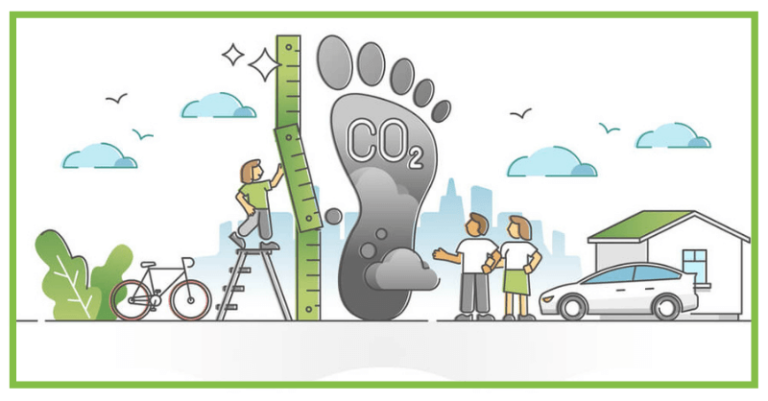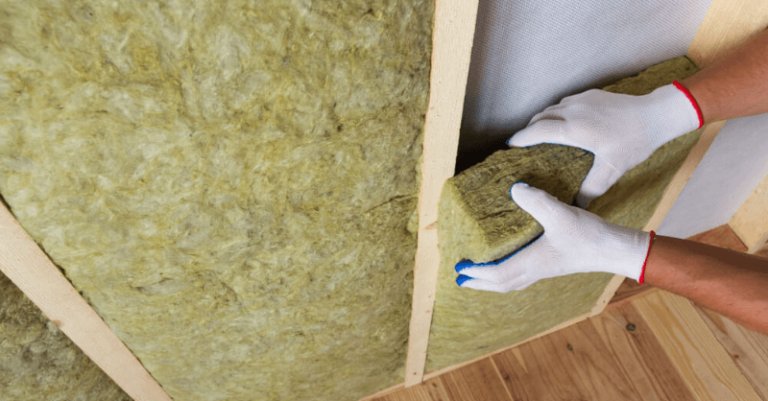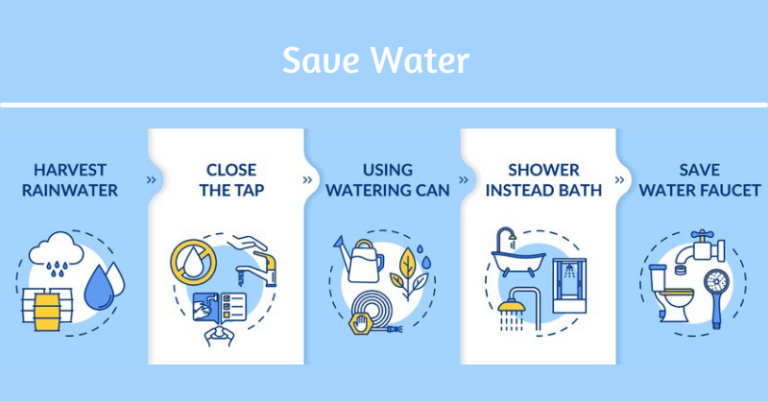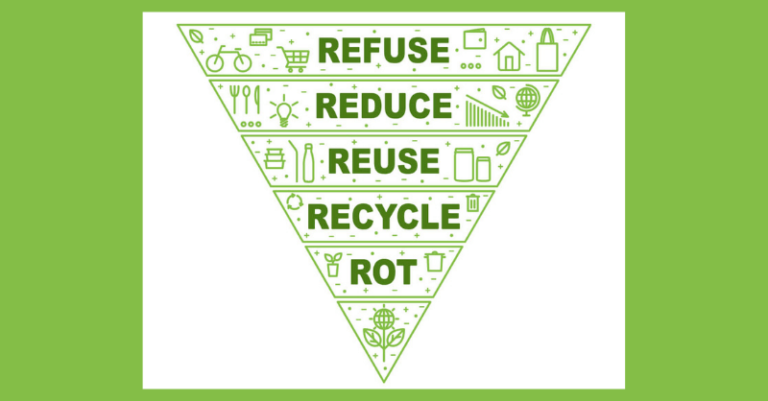
An Essential Guide To Acing Your Teacher Certification Exam
Earning your teacher certification is a crucial step in launching a rewarding career in education. The certification exam, a critical

Over the course of the last 200 years, human activities have destroyed mother nature. And now we are on the brink of unrecoverable environmental disasters. However, reducing carbon footprint can somewhat fend off the repercussions of climate change. So, how to reduce carbon footprint at home?
You can help the environment in many ways by minimising your carbon footprint at home.
This article will give you a rundown of the changes you need to make to reduce your carbon footprint. We are here to help you make the transition to an eco-friendly lifestyle in no time at all.
The phrase carbon footprint comes up often when we talk about environmental and climate change. But what exactly is the carbon footprint? It is crucial to know what carbon footprint is before learning about how to reduce carbon footprint at home.
Carbon footprint is referred to the total amount of greenhouse gases released into the atmosphere. It also refers to our impact as human beings on the environment. Some of the significant contributors to carbon footprints are food, consumption, transportation, household energy etc.
We usually measure it in the tonnes of CO2s. According to the National Statistics, the annual emission of CO2 in the UK was 451.5 million tonnes in the year 2018. Carbon footprint is usually measured on an individual, organisation and national level.

Now that you have a better understanding of carbon emissions, let’s discuss how to reduce carbon footprint at home. Let’s look at some simple and convenient steps you can take up to reduce your carbon footprint at home. Remember, a simple change can have a big positive impact on the environment.
Here are 8 effective ways to reduce your carbon footprint at home.
Read through these 8 simple steps and find out how to reduce carbon footprint at home.

You can effectively switch to a company that provides green electricity. And by switching, you can reduce your household carbon emission as well as save money on electric bills. It is because green energy is cheaper than non-renewable energy. Green electricity comes from renewable energy sources such as wind, solar or hydroelectric energy.
Also, installing solar panels in households is pretty easy. So, that is an option you can explore if you want to go completely green. In addition, you will be saving a ton of money by cutting out the middleman, i.e electricity company. You can even join a community solar farm if you don’t have a suitable roof for installation.
So, how to reduce carbon footprint at home?
The answer is by insulating your residential space. That’s because heating your residential space is an energy-intensive and costly process. In contrast, insulating the walls of your home can ensure the house retains the heat during winter. In addition, insulators keep your home cool during the summer time.

So, you will be using less energy by insulating your home space. And that basically puts you one step closer to reducing your carbon footprint. And not to mention you save a huge chunk on your household bills going towards energy consumption.
Some insulators can last for years. However, you should replace insulators if it’s damaged from pest attack or if moulds start to appear. Before deciding to reinsulate, you can take help of a professional energy auditor to figure out details. Consequently, you can install a cool roof. It is made of reflective material that keeps your house cool by redirecting light away from your home. Change the doors and windows of your home that don’t meet the modern energy efficiency standards.
Nowadays, electric appliances are becoming more energy-efficient by the second. Furthermore, many companies highlight and encourage consumers to use energy-efficient appliances. Using energy-efficient products shows that you care about the environment. And it demonstrates your commitment to reducing your carbon footprint at home.

You can choose appliances with a high energy star rating or buy energy-saving light bulbs. These options will help make your home more eco-friendly. In addition, always make sure to switch off the lights and appliances when you are done using it. Consequently, while buying electronic appliances, make sure it has the energy star logo on it.
How to reduce carbon footprint at home, you ask? Using less water is another way to go! For processing and delivering water to your home, it takes a lot of energy and resources. Moreover, heating water is also quite energy-intensive. Using less water can help put a positive impact on the environment. There will be a severe water shortage by the year 2040 if we keep using water recklessly.

Most of us also have a bad habit of letting the tap run while we are brushing our teeth. A survey in 2014 found that 33% of the UK population leave the tap running most times while brushing their teeth. And six litres of water is wasted per minute due to keeping the taps running.
So, make sure to turn off the taps while brushing your teeth. Also, only boil the amount of water you will be using. In addition, taking a shower instead of using the bath will save much more water. Do not dispose of things down the toilet by flushing. Because one flush can waste about 5 to 7 gallons of water, and you do not want to do that.
Consequently, use organic toiletries. Conventional toiletries contain harmful toxins. And it goes down the drain only to contaminate our water supplies. Moreover, lots of reusable household items require gallons of water to produce them. For instance, it takes 37 gallons of water to produce one roll of toilet paper. Consequently, it takes 144 gallons of water to produce a single disposable diaper. Hence, you can save water by switching to reusable materials.
Our diet and eating habits have a significant impact on the environment. Mother nature offers us amazing bounties every passing season. When we talk about how to reduce carbon footprint at home, we can not but mention the necessary diet changes. Having a plant-based diet is better and healthier for the environment. By eating fewer or no meat, you can make a big difference.

14.5% of total man-made greenhouse emission comes from the livestock industry. Feed production and methane gas emission of livestock are two main causes behind greenhouse emissions. Moreover, dairy and meat production necessitate a huge amount of water, land and energy. In addition, most red meat imported from overseas takes up a lot of resources. For example, in 2017, the UK imported 23% of its total red meat consumption from overseas.
Consequently, methane is 25 times more dangerous and potent than CO2. As a result, it has the ability to trap heat in the atmosphere for 100 years. Moreover, if you forgo meat, you will be reducing your carbon footprint by 8 pounds per day. That means your carbon footprint will reduce by 2920 pounds per year.
So, how to reduce carbon footprint at home? You can start by eating seasonal and locally sourced food. Imported food is transported using trucks, ships or planes. These transports use fossil fuel. So, by eating imported food, you are increasing your carbon footprint indirectly.
In contrast, eating seasonal food is great for the environment. Seasonal produce is fresh and absolutely delicious. Moreover, by buying local food, you are supporting the local farmers. So, always go to your nearby farmers market and pick your choice of absolute fresh food. In addition, you can buy food in bulk. However, make sure you always carry your own reusable bags.
In this age of fashion, trendy and cheap items go out of style really quickly. The growing fast fashion industry is another by-product of capitalist society. The 6th step on how to reduce carbon footprint at home; don’t fall into the trap of fast fashion.

When people keep on buying new clothes, they throw away the old ones. At most times, the thrown clothes are dumped into the landfills. The clothes decompose and produce methane in the landfill.
In terms of textile wastes, the UK is the fourth largest waste producer in Europe. Consequently, the study found that Britons discard 3.1 kg of textile waste each year. Of the 3.1 kg textile waste per person, 0.8 kg waste is incinerated yearly. Incinerating clothes can release methane, carbon dioxide and other greenhouse gases into the air. As a result, it contributes to the growing climate crisis. In addition, incineration severely diminishes the air quality.
Consequently, most fast fashion is manufactured and shipped from developing South Asian nations. The list of South Asian nations include Bangladesh, China, Vietnam etc. To ship clothes from these nations, brands use cargo ships or aeroplanes. And we already know how much fossil fuel they burn.
In a sense, the fast fashion industry compels you to increase your carbon footprint directly and indirectly. And it is time you see that and reject this vicious cycle of fast fashion. You can buy recycled or vintage clothing in consignment shops if absolutely necessary.
In addition, you can wash your clothes in cold water. The cold water detergent enzymes do a better cleaning in cold water. You can save up to 500 pounds of carbon dioxide by doing two loads of laundry in cold water. In contrast, doing laundry in hot or warm water can increase your carbon footprint.
An average car can produce about 5 tons of carbon dioxide each year. Although the rate of emission varies depending upon the type of car, it is more or less the same. Traditional cars pollute the air by putting out a lot of exhaust.

In the UK, the transportation industry was responsible for 27% of total greenhouse gas emission in 2019. In 2019, the UK’s transportation industry alone produced 122 million metric tons of carbon dioxide. It is considered the most polluting sector in the UK. In addition, it is also dangerous for human health. Because the toxins directly come out of the tailpipe. And the tailpipes are at the street level, where air can be breathed directly into the lung.
So, how to reduce carbon footprint at home? Drive less and bike more. You can get all your workout while riding a bike to work or other places. Cycling strengthens your muscle power. And it is a great way to help the environment. Cycles require much less energy to manufacture than manufacturing a regular car. It also puts less pressure on the environment.
In addition, walking is another environmentally friendly way to travel. You can walk instead of driving if it’s a short distance destination. Walking is good for your health as well as the planet. If you can’t walk or ride a bike for any reason, use public transportation. Using public transportation reduces carbon emissions. And it also solves the problem of traffic and idling of engines.
If you must drive, avoid driving aggressively. And avoid unnecessary accelerations or brakes. Compared to calm driving, aggressive driving can result in increased fuel consumption by 40%. Consequently, keep your tires properly inflated. It can increase your fuel efficiency by 3%. Proper maintenance of your car can increase efficiency by 4%.
How to reduce carbon footprint at home you ask? Go zero waste. It is a great way to combat climate change. We have all heard of the 3 R’s that are Reuse, Recycle, Reduce. But there are two other R’s which are equally important. Those are Refuse and Rot.
Let us break down the components of 5 R’s.

You have to eliminate single-use plastic, no matter how convenient it is for you. Because, single-use plastics and papers pollute our waterways and oceans. Moreover, producing and recycling plastic is an energy-intensive process. So, it is better if you opt for reusable materials or products.
Be mindful of downsizing your purchase. Remember, every new purchase comes with an added carbon price tag. Embedded carbon has a big impact on our environment.
According to the United Nations Environment Programme (UNEP), making a pair of jeans takes about 3,781 litres of water throughout the whole production process. This corresponds to the emission of around 33.4 kilograms of carbon equivalent.
So, if you have a habit of buying new jeans when you don’t even need them, think again. Because buying less stuff is the most sustainable option to reduce your carbon footprint.
In this age and time, we are cycling through products faster than ever before. As a result, most used products end up in landfills even though the product is in good condition. Because dumping a product is more cost-saving than recycling.
Repair or upcycle an item instead of replacing it. You can even buy second-hand products. You can buy second-hand appliances that are not used sporadically, such as lawnmowers or power drills.
Instead of throwing away the food waste in an unkempt manner, you can try to compost it. Moreover, you can even set up a compost system for your food scraps. Consequently, there might be food scrap drop off centres all around the city you live.
You can use those if setting up a compost system is too much work. You can make a real difference by reducing the amount of waste you generate.
You have to properly recycle materials that you can not reuse, refuse or reduce. This may include any plastic, glass, metal, or paper products that you use. You can research your city’s laws if necessary for a clear idea about recyclable products.
You can find out whether the container is recyclable in your city by checking the number in the triangle below the container. The number indicates what kind of resin is used for the plastic. If you are recycling a food container, empty it and rinse it properly. A dirty container can ruin a whole batch of recyclable materials.
Moreover, you can recycle broken electronics for free at many local shops. Also, you can collect dry cell batteries and recycle them through local municipalities.
One simple action can really add up to land a huge impact when everyone joins in. Knowing how to reduce carbon footprint at home is crucial to saving this planet we call our forever home. And doing your part to fight climate change and reduce carbon emission makes you a net zero hero.
To learn more about fighting climate change and sustaining the wellbeing of our planet, take our Healthy Environment Course. The course teaches you detailed ways you can roll out positive changes for planet earth. Moreover, the CPD accredited course is perfect for anybody interested in climate change activism.

Earning your teacher certification is a crucial step in launching a rewarding career in education. The certification exam, a critical

Individual homework is one of the types of independent work for schoolchildren and students and is necessary for improving their

Qualitative research is a systematic approach to exploring meanings, concepts, or experiences without primarily relying on numerical data. The research

Benefits Of Writing A Doctoral Dissertation When you decide to enter a college or university, you may have a professional

When selecting a college, students often prioritize familiar criteria such as academic reputation, location, and financial aid. However, beneath the

The culinary landscape is constantly evolving, with global cuisine becoming increasingly prominent. French culinary schools, renowned for their mastery of

4 responses on "How To Reduce Carbon Footprint At Home: Help Our Planet"